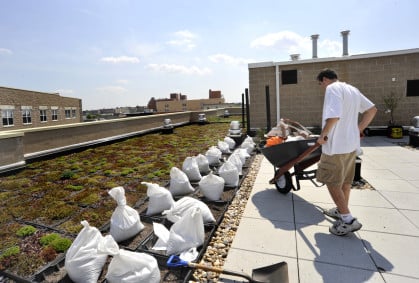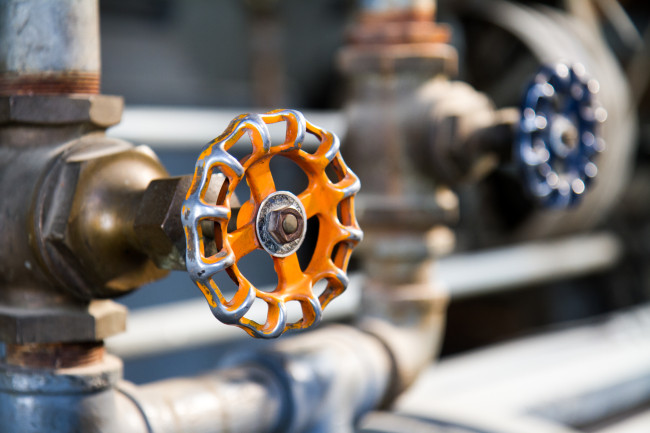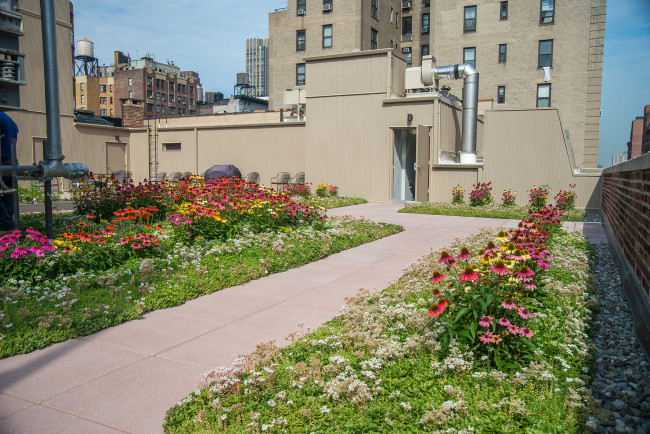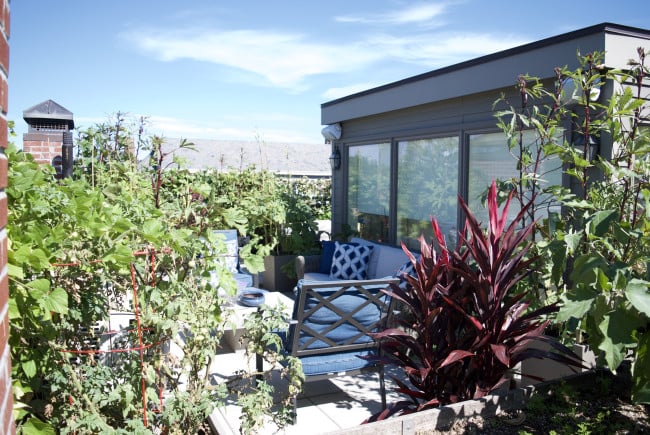- Green roofs can reduce rainwater runoff, cool a building, and provide a habitat for animals
- Buildings can save up to $200,000 in taxes if the green roof covers more than half of the space
- An architect or licensed engineer can determine if your building can support a green roof

The incentive program covers most large and small residential properties, including condos and co-ops, but only those that haven't already received a handful of other property tax abatements.
If the grass is always greener on the other side, what about the grass on the roof?
Green roofs—when a building’s rooftop is covered by lush vegetation—offer a handful of environmental benefits to New Yorkers, but qualified buildings can score a whole different kind of green through a property tax abatement.
Qualifying buildings can save up to $200,000 off their property tax bill if they install a green roof that covers more than 50 percent of eligible roof space, according to the New York City Department of Finance (DOF), which administers the program.
At least 80 percent of the green roof’s plans have to be made of sedum or other drought-resistant flora, which offers a handful of other environmental benefits, such as limiting rainwater runoff and keeping buildings cool, says Holly Savoia, the director of sustainability outreach and assistance at the NYC Department of Buildings.
“[Green roofs] absorb rainwater, and they assist in slowing down rain runoff,” Savoia says. “They keep the heat out in the summer and the cold out in the winter, they do aid in purifying the air, and they are nice to look at. They provide a break for city-dwellers who want to see some greenery.”
Plus, green roofs provide valuable feeding grounds for the migratory birds that populate NYC’s skies, says Dustin Partridge, the director of conservation and science at the NYC Audubon Society.
“Green roofs are one of those cases where it’s really a win-win for the whole city,” Partridge says. “They are incredibly beneficial to people, the city as a whole, building owners, and to the wildlife that moves through this city that we often don’t think about.”
Fun fact: That wildlife includes the Blackpoll Warbler, a bird that travels all the way from Alaska through New York to South America. It’s been spotted snacking on the 6.75-acre green roof on top of the Javits Center, Partridge says.
If you want to get a tax abatement for a green roof, and maybe make some feathered friends in the process, read on.
Find out if green is your color
Before applying, it’s a good idea to figure out if your condo, co-op, or apartment building can qualify for the tax abatement, and what discount it’s eligible for.
The incentive program covers most large and small residential properties, including condominiums and cooperatives, but only those that haven’t previously scored a handful of other property tax abatements.
Those abatements include 421-a, a tax incentive for affordable housing construction; 421-b, which benefits new buildings and major reconstruction; and 421-g, an incentive for the conversion of commercial buildings to housing in downtown Manhattan. Your building also cannot have an agreement to make payments in lieu of taxes (PILOT), another type of property tax incentive.
If you meet the requirements, you can qualify for a tax abatement equal to $5.23 per square foot of green roof space or $15 per square foot, if your property sits in certain areas of central Brooklyn, the south Bronx, and northern Manhattan. But if you’re hoping to score that extra tax benefit, you have to act fast. Projects receiving a $15 per square foot incentive must be completed on or before June 30th, 2024, according to city guidance.
If you’re not sure whether you qualify, you can also talk with a staffer at the DOB at its after hours sessions, every Tuesday from 4 p.m. to 7 p.m. at the agency’s borough offices, or contact an architect or engineer, Savoia says.
Talk to a professional
If your property fits the bill, you should first speak with a registered architect or licensed engineer to do a structural analysis of your roof. They can determine if your roof can handle the added weight of soil and vegetation, identify proper drainage requirements, and create a maintenance plan.
The maintenance plan—which covers a minimum of four years after the abatement is granted—must include a semi-annual inspection of the roof, monthly inspection of the drains, and plans to replace plants if they don’t survive.
It’s crucial to speak with a professional to find out if a green roof project is possible, Savoia says.
“[You] do have to hire a registered design professional to submit the application for [you],” Savoia says. “It is important that it's designed well so that there are not any problems going forward.”
Send off your documents
Once you’ve made a plan, your architect or engineer would be charged with filing an alteration type 2 application with the DOB to get approval for construction on your roof. At the same time, they would submit a property tax abatement application form, with signatures from the owner and the architect or engineer. That form must be sent in by March 15th in order for the tax abatement to take effect on July 1st of the same calendar year.
Your documentation should include your plan for the roof, the structural analysis, details on the proposed green roof, and your maintenance plan, according to the DOB. If the DOB approves of the application, it then forwards the documents to the DOF which files the abatement.
The DOB has received 32 applications since 2021, with most filed in Queens and Brooklyn. While the DOB didn’t provide a specific timeline on the approval process, Savoia says it’s “relatively quick.”
You Might Also Like
Sign Up for our Boards & Buildings Newsletter (Coming Soon!)
Thank you for your interest in our newsletter. You have been successfully added to our mailing list and will receive it when it becomes available.
























